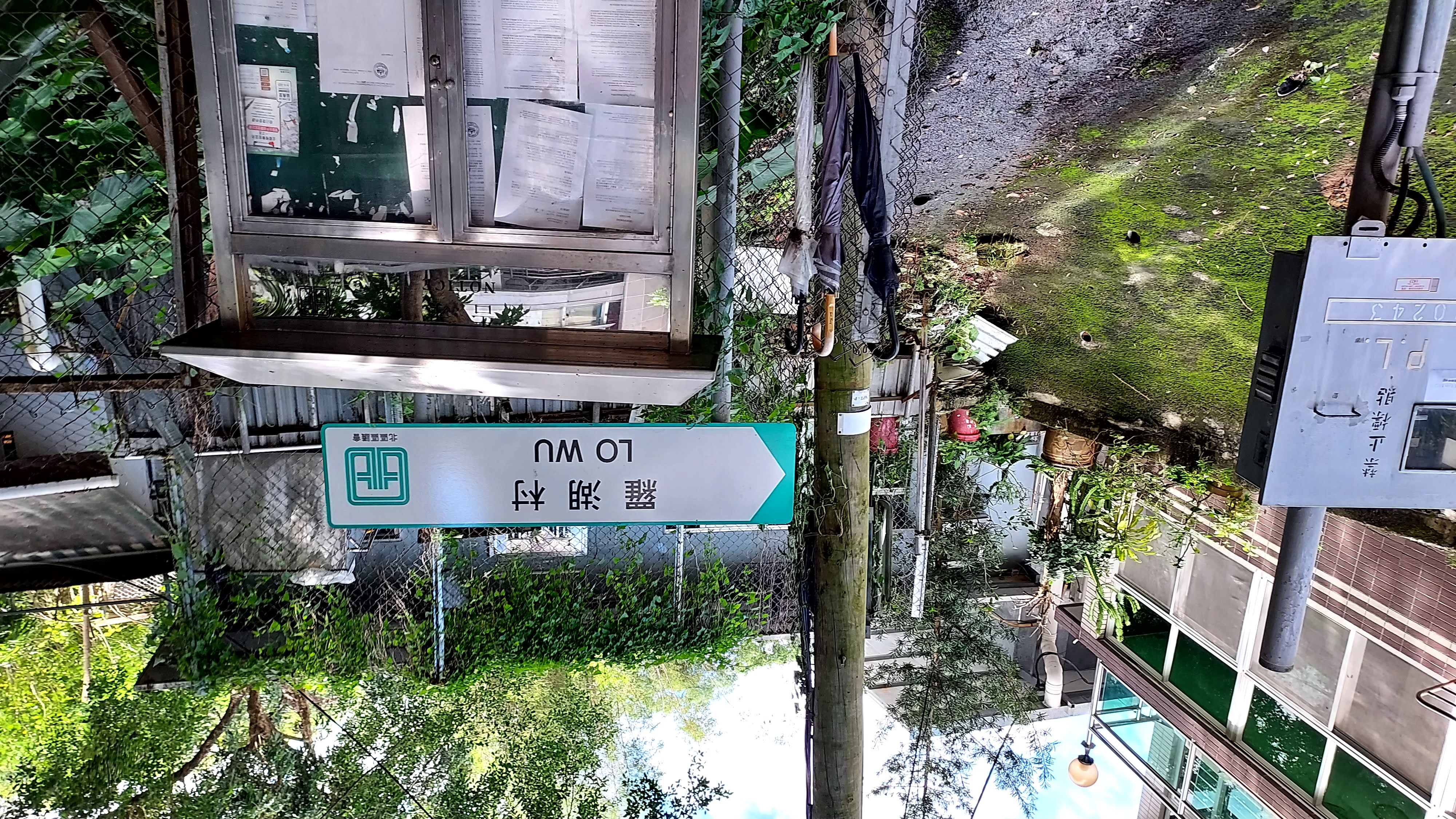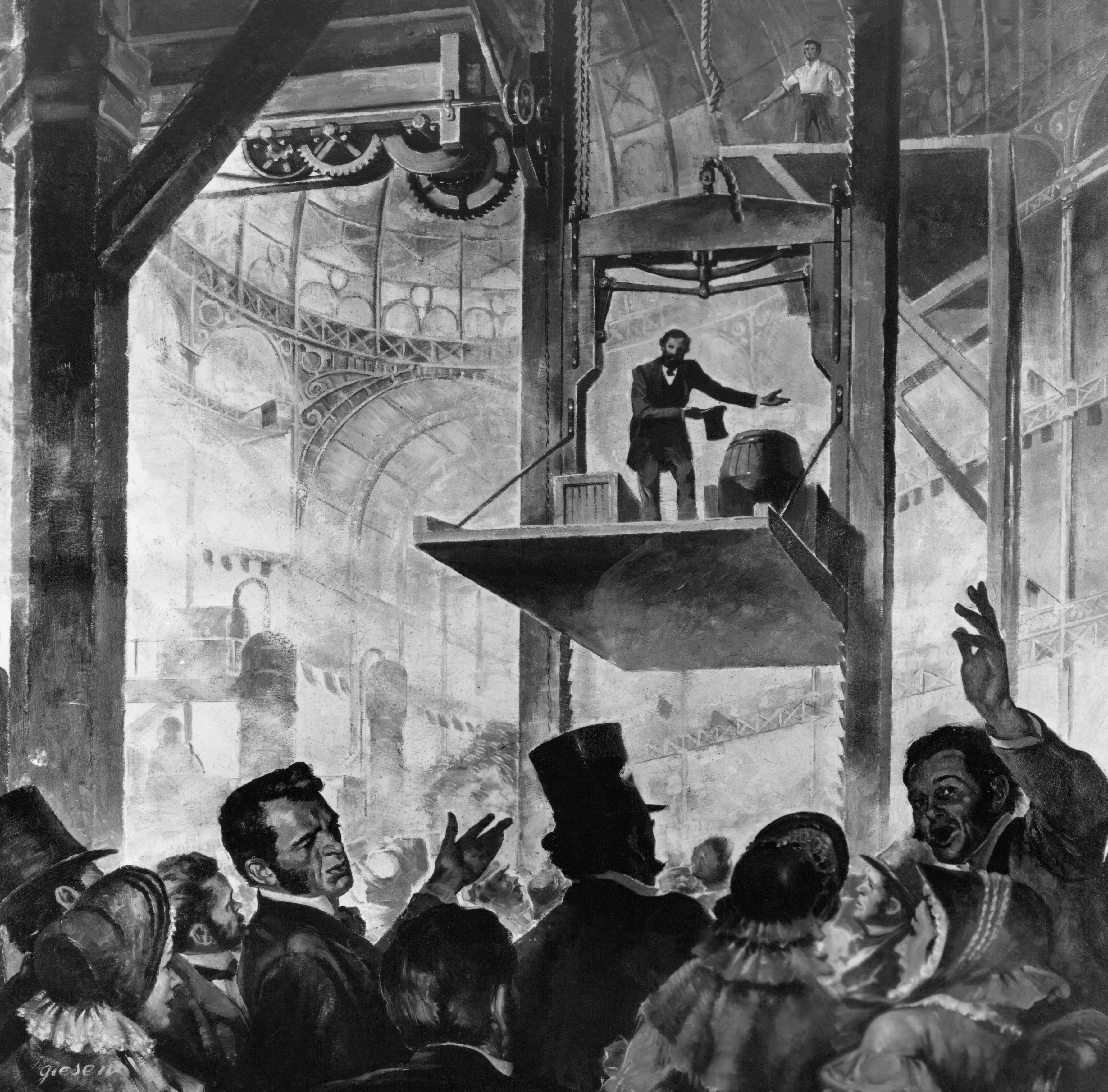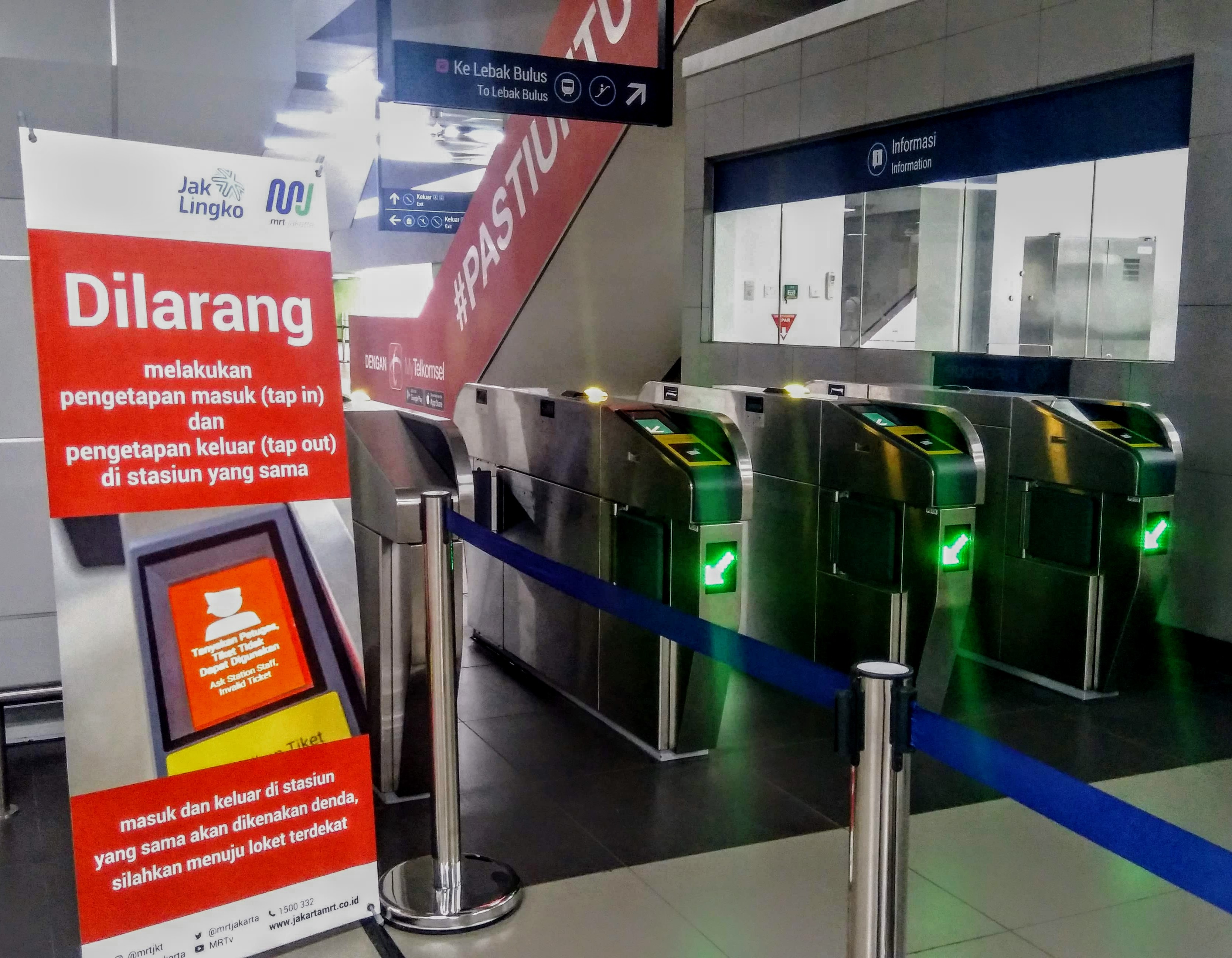|
Lo Wu Station
Lo Wu is the northern terminus of the (Kowloon-Canton Railway) of Hong Kong, located in Lo Wu within the Closed Area on Hong Kong's northern frontier. The station serves as a primary checkpoint for rail passengers between Hong Kong and mainland China and vice versa, rather than serving a specific area. It is also the northernmost railway station in Hong Kong. History Initial opening When the Kowloon–Canton Railway (KCR) first went into service, trains did not stop at Lo Wu, as there was no border patrol at the time. However, shortly after the People's Republic of China was created in October 1949, the KCR announced that trains would terminate at Lo Wu, and that passengers would be able to cross the border on foot. After the economic reformation of China, through trains re-commenced running in 1979, and cross-border traffic increased substantially. During the 1980s, Lo Wu station was completely redeveloped. On 15 January 1987, the new Lo Wu station was formally opened. ... [...More Info...] [...Related Items...] OR: [Wikipedia] [Google] [Baidu] |
Lo Wu
Lo Wu () is an area in North District, New Territories, Hong Kong. It lies on the border between Hong Kong and mainland China, specifically the Luohu District of Shenzhen in mainland China. The area is most notable as the location of the most heavily used immigration control point for passengers travelling to and from mainland China. It is where the Lo Wu station is located. History Lo Wu () was known as (Lo Wu, shell lake) in Cantonese. (lo) and (lo) are two characters with same consonant and vowel but of different tones. Lo Wu was mentioned in the list of withdrawn villages during Qing era against remaining resistance of former Ming. At the time of the 1911 census, the population of Lo Wu was 8. Location Lo Wu is located at junction of Sheung Yue River and Sham Chun River. East of Lo Wu is a hill named Sandy Ridge, known as Sha Ling to locals, which is one of the major cemeteries located in Hong Kong. The entire Lo Wu area was divided in 1898 by the Convention ... [...More Info...] [...Related Items...] OR: [Wikipedia] [Google] [Baidu] |
Lo Wu Station Concourse 1997
Lo may refer to any of the following: Arts and entertainment *Comic LO, a Japanese ''lolicon''-focused erotic manga magazine * ''Lo!'', the third published nonfiction work of the author Charles Fort * L.O., a fictional character in the Playhouse Disney show Happy Monster Band * Lo (film), ''Lo'' (film), a 2009 independent film * Lo Recordings, a London-based record company established in 1995 * Law & Order (franchise), ''Law & Order'' (franchise), several related American television series created by Dick Wolf * ''Lost Odyssey'', a 2007 role-playing video game * ''Lore Olympus'', a 2018 webcomic by Rachel Smithe ** Lore Olympus (TV series), ''Lore Olympus'' (TV series), an in-development adaptation by The Jim Henson Company Businesses and organizations * Legal observer, a third-party organization that monitors protests or war zones in the interest of protecting human and civil rights * Lo Recordings, a London-based record company established in 1995 * LO, abbreviation used for t ... [...More Info...] [...Related Items...] OR: [Wikipedia] [Google] [Baidu] |
Sliding Door
A sliding door is a type of door which opens horizontally by sliding, usually parallel to (and sometimes within) a wall. Sliding doors can be mounted either on top of a track below or be suspended from a track above. Some types slide into a space in the parallel wall in the direction of travel, rather than the door sliding along the outside of the parallel wall. There are several types of sliding doors, such as pocket doors, sliding glass doors, center-opening doors, and bypass doors. Sliding doors are commonly used as shower doors, glass doors, screen doors, and wardrobe doors, and in vans. History Sliding doors were used as early as the 1st century CE in Roman houses (as evidenced by archaeological finds in Pompeii, Italy Italy, officially the Italian Republic, is a country in Southern Europe, Southern and Western Europe, Western Europe. It consists of Italian Peninsula, a peninsula that extends into the Mediterranean Sea, with the Alps on its northern land b ... [...More Info...] [...Related Items...] OR: [Wikipedia] [Google] [Baidu] |
Elevator
An elevator (American English) or lift (Commonwealth English) is a machine that vertically transports people or freight between levels. They are typically powered by electric motors that drive traction cables and counterweight systems such as a hoist, although some pump hydraulic fluid to raise a cylindrical piston like a jack. Elevators are used in agriculture and manufacturing to lift materials. There are various types, like chain and bucket elevators, grain augers, and hay elevators. Modern buildings often have elevators to ensure accessibility, especially where ramps aren't feasible. High-speed elevators are common in skyscrapers. Some elevators can even move horizontally. History Pre-industrial era The earliest known reference to an elevator is in the works of the Roman architect Vitruvius, who reported that Archimedes ( – ) built his first elevator probably in 236 BC. Sources from later periods mention elevators as cabs on a hemp rope, powered by people o ... [...More Info...] [...Related Items...] OR: [Wikipedia] [Google] [Baidu] |
Escalator
An escalator is a moving staircase which carries people between floors of a building or structure. It consists of a Electric motor, motor-driven chain of individually linked steps on a track which cycle on a pair of tracks which keep the step tread horizontal. Escalators are often used around the world in places where elevator, lifts would be impractical, or they can be used in conjunction with them. Principal areas of usage include department stores, shopping malls, airports, list of transit systems, transit systems (railway/railroad stations), convention centers, hotels, arenas, stadiums and public buildings. Escalators have the capacity to move large numbers of people. They have no waiting interval (except during very heavy traffic). They can be used to guide people toward main exits or special exhibits and may be weatherproofed for outdoor use. A non-functional escalator can function as a normal staircase, whereas many other methods of transport become useless when they ... [...More Info...] [...Related Items...] OR: [Wikipedia] [Google] [Baidu] |
Paid Area
In rail transport, the paid area is a dedicated "inner" zone in a railway station or metro station, accessible via turnstiles or other barriers, to get into which, visitors or passengers require a valid ticket, checked smartcard or a pass. A system using paid areas is often called fare control. Passengers are allowed to enter or exit only through a faregate. A paid area usually exists in rapid transit railway stations for separating the train platform from the station exit, ensuring a passenger has paid or prepaid before reaching the railway platform and using any transport service. Such design requires a well-organized railway station layout. In some systems, paid areas are named differently - for example, on railways in the United Kingdom they are called compulsory ticket areas. The paid area is similar in concept to the airside at an airport. However, in most cases entrance to the paid area requires only a valid ticket or transit pass. The exception is in certain cases o ... [...More Info...] [...Related Items...] OR: [Wikipedia] [Google] [Baidu] |
Moving Walkway
A moving walkway – also known as an autowalk, moving pavement, moving sidewalk, travolator, or travelator – is a slow-moving conveyor mechanism that transports people across a horizontal or inclined plane, over a short to medium distance. They can be used by standing on them or walking on them, allowing users to cover that distance with less effort and/or more speed than by walking. They are commonly installed in pairs, to provide transport in each direction. History The first moving walkway debuted at the World's Columbian Exposition of 1893 in Chicago, Illinois, in the United States as ''The Great Wharf Moving Sidewalk.'' Designed by architect Joseph Lyman Silsbee, it had two sections: one where passengers were seated, and one where they could stand or walk. It ran in a loop down the length of a lakefront pier to a casino. Six years later, another moving walkway was presented to the public at the Exposition Universelle (1900), 1900 Exposition Universelle in Paris as t ... [...More Info...] [...Related Items...] OR: [Wikipedia] [Google] [Baidu] |
Lo Wu Bridge
The Lo Wu Bridge () is a footbridge and steel railway truss bridge across Sham Chun River linking Hong Kong and Shenzhen. Due to the course of widening the river section at Lo Wu, it is necessary to reconstruct the Lo Wu railway bridge as its span is not long enough for the widened river section. The old Lo Wu railway bridge has been relocated downstream in September 2003 to facilitate the construction of a new bridge for the widened Shenzhen River Lo Wu section. Owing to its historical value, the old rail bridge will be preserved as a monument on the bank of the Sham Chun River adjacent to the Lo Wu station. The whole bridge was relocated without any change of the existing features, and the shifting of the bridge across the existing railway line was the most difficult part of the operation. The government said damage to the existing bridge structure will be minimal. A smaller truss bridge now carries rail traffic between Lo Wu Control Point/Lo Wu station Lo Wu is the no ... [...More Info...] [...Related Items...] OR: [Wikipedia] [Google] [Baidu] |
Side Platform
A side platform (also known as a marginal platform or a single-face platform) is a platform positioned to the side of one or more railway tracks or guideways at a railway station, tram stop, or transitway. A station having dual side platforms, one for each direction of travel, is the basic design used for double-track railway lines (as opposed to, for instance, the island platform where a single platform lies between the tracks). Side platforms may result in a wider overall footprint for the station compared with an island platform, where a single width of platform can be shared by riders using either track. In some stations, the two side platforms are connected by a footbridge or tunnel to allow safe access to the alternate platform. While a pair of side platforms is often provided on a dual-track line, a single side platform is usually sufficient (trains are usually only boarded from one side) for a single-track line. Layout Where the station is close to a level crossing (g ... [...More Info...] [...Related Items...] OR: [Wikipedia] [Google] [Baidu] |
Chung Yeung Festival
The Double Ninth Festival is a traditional Chinese holiday observed on the ninth day of the ninth month in the Chinese calendar. According to Wu Jun, it dates back to the Eastern Han dynasty (25–220 AD). According to the ''I Ching'', ''nine'' is a yang number; the ninth day of the ninth month in the Chinese calendar (or double nine) has extra ''yang'' (a traditional Chinese spiritual concept) and is thus an auspicious date. Hence, the day is also called "Double Yang Festival" (). It is customary to climb a mountain, drink chrysanthemum liquor, and wear the ''zhuyu'' () plant (''Cornus officinalis''). Both chrysanthemum and ''zhuyu'' are considered to have cleansing qualities and are used on other occasions to air out houses and cure illnesses. On this holiday, some Chinese also visit the graves of their ancestors to pay their respects. In Hong Kong and Macau, whole extended families head to ancestral graves to clean them, repaint inscriptions and lay out food offerings such as ... [...More Info...] [...Related Items...] OR: [Wikipedia] [Google] [Baidu] |
Ching Ming Festival
The Qingming Festival or Ching Ming Festival, also known as Tomb-Sweeping Day in English (sometimes also called Chinese Memorial Day, Ancestors' Day, the Clear Brightness Festival, or the Pure Brightness Festival), is a traditional Chinese festival observed by ethnic Chinese in mainland China, Hong Kong, Macau, Taiwan, Malaysia, Singapore, Cambodia, Indonesia, Philippines, Thailand, and Vietnam. A celebration of spring, it falls on the first day of the fifth solar term (also called Qingming) of the traditional Chinese lunisolar calendar. This makes it the 15th day after the Spring Equinox, either 4, 5 or 6 April in a given year. During Qingming, Chinese families visit the tombs of their ancestors to clean the gravesites and make ritual offerings to their ancestors. Offerings would typically include traditional food dishes and the burning of joss sticks and joss paper. The holiday recognizes the traditional reverence of one's ancestors in Chinese culture. The origins o ... [...More Info...] [...Related Items...] OR: [Wikipedia] [Google] [Baidu] |
Sandy Ridge, Hong Kong
Sandy Ridge (), is a hill on the east side of Lo Wu in the New Territories, Hong Kong. The village of Sha Ling (), is located south of the hill besides Man Kam To#Transport, Man Kam To Road. Sandy Ridge is completely within the Frontier Closed Area, Closed Area of Hong Kong adjacent to the territory's border with Shenzhen in mainland China. Local council For electoral purposes, Sandy Ridge is part of the Sha Ta (constituency), Sha Ta constituency of the North District Council. It is currently represented by Ko Wai-kei, who was elected in the 2019 Hong Kong local elections, 2019 local elections. Features Sandy Ridge is noted for its two cemeteries, Sandy Ridge Cemetery and Sandy Ridge Urn Cemetery. Both cemeteries were relocated to Sandy Ridge from various areas in Kowloon and Hong Kong Island in 1949. The Border District Headquarters of the Hong Kong Police Force are located next to the village of Sha Ling. References Mountains, peaks and hills of Hong Kong North Dist ... [...More Info...] [...Related Items...] OR: [Wikipedia] [Google] [Baidu] |







